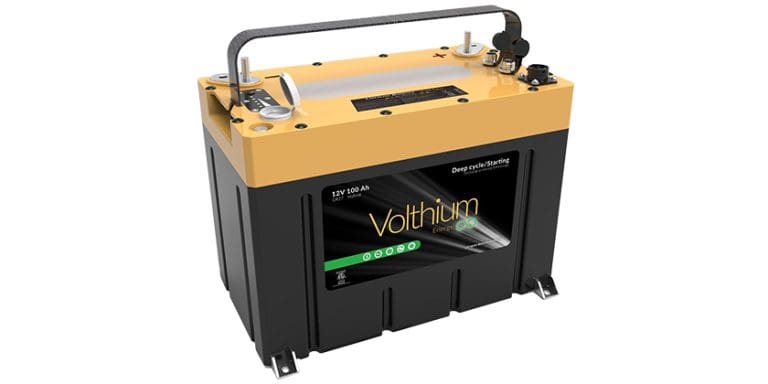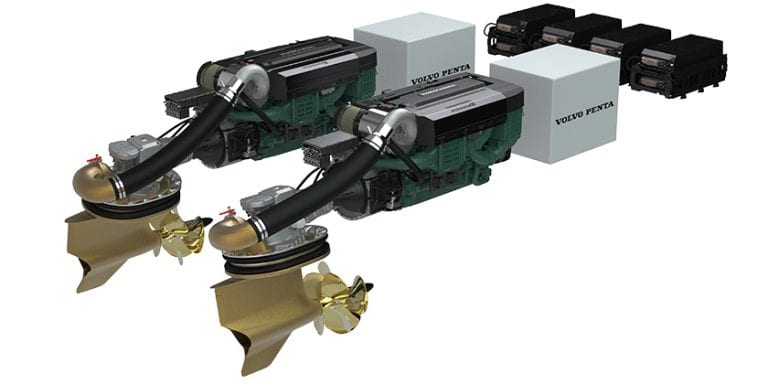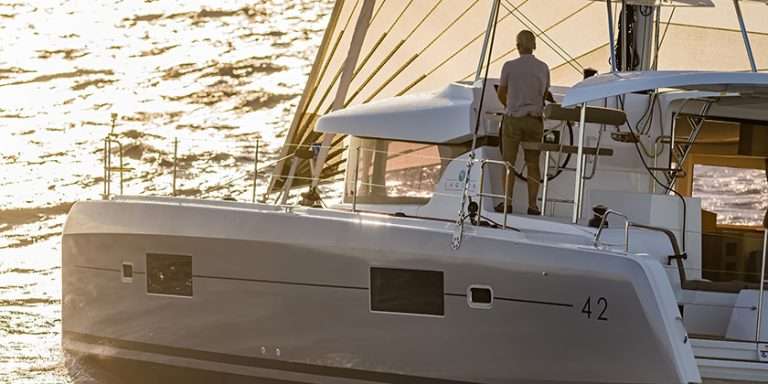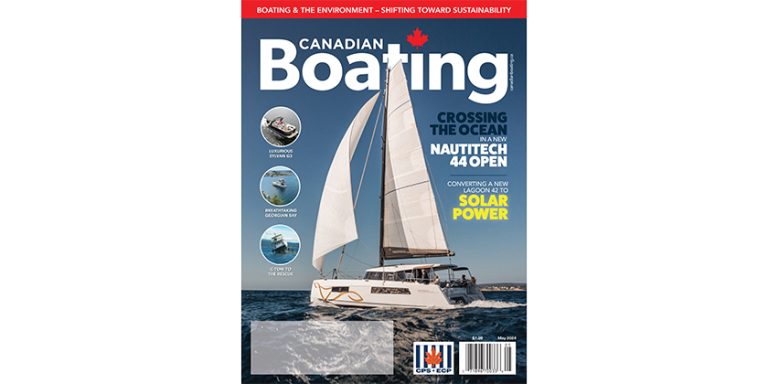Boat Nerd: DC Circuits Part 4 – Bolted connections, current protection

Feb 23, 2022
you may discover issues
Bolted connections
Many wires on a vessel are connected via a bolted lug. ABYC standard E-11 covers normal do and don’ts.
Some common ones –
– Do not place more than four lugs on a single terminal stud. If you have more than four cables/wires to connect to one point use a bus bar rated for the current or use two terminal studs and connect with a jumper or copper bar.
– The cable carrying the highest current should always be the first one on the terminal. Cables carrying lower currents are then stacked in order above this first cable. This is to prevent currents from the high current cables from flowing through smaller lower current lugs in the stack that may not be rated for it and introduce additional resistance.
– You may crimp multiple wires in one single lug provided the cross sectional area of the combined wires does not exceed the cross sectional capacity of the lug (no cutting strands off to make it fit!) and when pulling on the smallest wire it can withstand the force specified in ABYC E11 Table 13.
– Lugs are specified by two quantities, the size of the wire the lug can accommodate and the size of the bolt/screw hole in the lug. You always want to match the lug hole to the bolt so you don’t have side movement and potentially a higher resistance connection.
– The order of lug, washers and nut on a threaded stud is also very important. Many washers and nuts are stainless steel which has a higher resistance than copper and can lead to overheating conditions if installed in the wrong order in high current paths. The cable lug goes on first, tight against the bus bar or terminal device, followed by flat washer, lock washer and nut. Never put any washers between a lug and the bus bar or terminal device. Similarly when connecting cabling to a terminal device (such as a high amperage fuse holder) with a bolt, the order is terminal device, cable lug, washer, lock washer, bolt.
When running cabling on a vessel, remember to protect all wiring from chafe. This includes protecting the wiring from sharp edges when passing through a bulkhead and supporting the wire every 18” or so on a horizontal run. Splitloom (thin walled corrugated plastic conduit slit down the its length) is often used to protect wiring from physical abuse.
When you are done your wiring project, spraying the finished product with a corrosion inhibitor is a good idea, especially in a salt water environment. This will help prevent terminals from developing a higher resistance and leading to poor connections or hot spots.
When sizing wire for a particular application on your vessel, it is important to realize that resistance does not only occur in the cable itself, especially at higher current flows. Additional resistance is created by any items in the path the current has to flow through. This list and ballpark resistances can include:
· cable size and length (eg #2 cable .513 mohms/metre)
· Fuses (0.35 mohms for a 150A fuse)
· Shunts for current readings (0.10 mohms for a 500A shunt)
· Battery switches
· Cable lug crimp and Bolted connections (0.06 mohm per cable connection)
These values can greatly increase due to a loose connection, a bad crimp and dirty or corroded terminals.
In summary to keep voltage drop as low as possible:
· keep cables as short as possible
· Ensure the cables are sized (required cross section) correctly
· Keep all screw and bolted connections tight
· Ensure connections are clean and spray with corrosion blocker when done
· Use good quality lugs and crimp with recommended tools. Cover with hot melt glue heatshrink to seal
· Use good quality battery switches rated for the load
· Keep the number of connection points in a cable run as low as possible.
Over Current (OC) Protection
All wiring (with the exception of the engine cranking circuit) on a vessel needs to be protected by overcurrent devices, be they circuit breakers or fuses. Circuit breakers have the advantage they can be closed again after a fault (once the cause of the fault has been determined and rectified) whereas a fuse will need to be replaced. Circuit breakers can often be used as a switch as well to control whether a circuit is energized or not. That being said fuses are simpler devices and much cheaper to purchase.
OC devices are rated by voltage, DC/AC operation, OC value, trip time and Amp Interrupting Capacity (AIC).
The most important ratings such as maximum working voltage and working current are normally printed or stamped on the device.
AC voltages are easier to interrupt than DC as AC voltages pass through zero volts twice every cycle. You will notice because of this that if a device is rated for DC and AC operation it DC ratings will be lower than its AC ratings.
One further quantity that is vital to selecting a circuit breaker or fuse is the Amp Interrupting Capacity (AIC). Breaking a circuit will often result is a small arc as the contacts open or the fuse element melts. Under fault condition this arc can become substantial and it is the job of the OC device to open and separate the two sides of the fuse or breaker enough that the arc is extinguished. If there is an insufficient gap for the energy in the arc the OC device may not be able to clear the fault and current will continue to flow. Not a good thing.
Circuit Breakers
Circuit breaker internal mechanisms are some combination of thermal, magnetic and hydraulic. Most breakers you will encounter on a boat will be of the thermal variety as they are the least expensive to manufacture. In a thermal breaker, current flows through a bimetallic element and above the trip rating will cause the strip to bend and trip the mechanism. In a high ambient temperature environment a thermal breaker may trip earlier than expected. They are very beneficial though for motor starting where you may have a short start current several times the normal running current.

See figure 8 for typical ratings labels on one of the most common breaker types on vessels. In that photo you can see that the right hand breaker is rated to 65V, 5A is its sustained current limit, it is a DC only breaker, will trip at 6.25A and has a delay curve of 12. From the manufacturers website “Delay Curves 12,14, 22, 24, 32, 34, 62, 64, 72, 74, 92, 94: Breakers to hold 100% and must trip at 135% of rated current and greater within the time limit shown in this curve.” The manufacturer website will typically give the curve of current vs time for each delay curve. Curve 12 is a short delay curve. The left hand breaker on the other hand is rated for AC (50 or 60 HZ) and DC operation, up to 65VDC and 250VAC. It will sustain 20A tripping at 27A with a delay curve 72. These breakers have an AIC of 7500 A. (From spec sheets, not shown on the breaker) Figure 8 shows another example of a Blue Seas circuit breaker commonly found on boats.
Next time – Fuses!
 CYOB’s Boat Nerd, Mike Wheatstone, has enjoyed sailing since he was in his mid teens. A Queen’s electrical engineer by training, he spent his career working for Ontario Hydro and Hydro One. There he worked in engineering supporting the power system control centres.
CYOB’s Boat Nerd, Mike Wheatstone, has enjoyed sailing since he was in his mid teens. A Queen’s electrical engineer by training, he spent his career working for Ontario Hydro and Hydro One. There he worked in engineering supporting the power system control centres.
His first boat in 1980 was a Shark. With a growing family’s 2-foot-itis, there were upgrades to a Grampian 26, CS34 and currently a Hunter36. Now retired, Mike and his family spend summers on the Hunter (Dragonfyre) and winters in the Caribbean on their Leopard 43 cat (Peregrine).




























